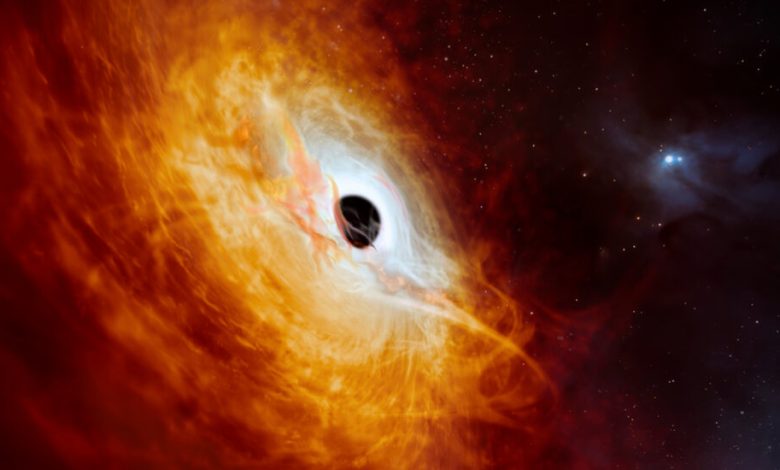A Voracious Black Hole at the Dawn of Time?

Astronomers claimed on Monday that they had discovered what might be the hungriest, most luminous object in the visible universe — a supermassive black hole that was swallowing a star a day. That would be the mass equivalent of 370 suns a year disappearing down a cosmic gullet 11 billion years ago at the dawn of time.
Burp indeed.
In a paper published in Nature Astronomy, Christian Wolf of the Australian National University and his colleagues from Australia and Europe, called the object at the center of a newly discovered quasar known as J0529-4351 “the fastest growing black hole in the universe.”
According to their estimates, this black hole tipped the scales as one of the most massive black holes ever found: 17 billion times as massive as the sun.
But other astrophysicists cast doubt on the result, questioning the methods by which the mass and luminosity of the new quasar had been estimated. They said the calculations were too uncertain to be conclusive. “They may have the right value, but I don’t think other observers would be shocked if it turned out the true mass was somewhat less,” said Daniel Holz, a theoretical astrophysicist at the University of Chicago.
“It does seem like an extreme object,” he said. But, he added, “I would be shocked if this turned out to be the most luminous quasar on the sky.”
Jenny Greene, a professor of astrophysical sciences at Princeton University, called the result “cute.”



